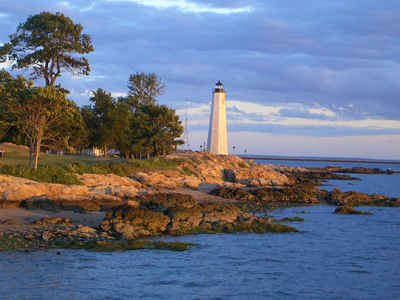Connecticut Counties
There are currently eight Counties in Connecticut. Four of them were originally created in 1666, during the first consolidation of the colony of Connecticut. Middlesex and Tolland counties, have been created since American independence, both in 1785.New Haven County, Connecticut
New Haven County Education, Geography, and History
New Haven County is a county located in the south central part of the state of Connecticut. Based on the 2010 census, the
population
was 862,477 making it the third-most populous county in Connecticut.
New Haven County was created on May 10, 1666 and
was formed as One of four original counties created in Connecticut.
The County Seat was New Haven
(1666-1960). The county is named after New Haven
Harbor, site of one of the early Connecticut colonial settlements. Two of the state's largest cities, New Haven (2nd) and Waterbury
(5th), are part of New Haven County.
New Haven County comprises the New Haven-Milford, CT Metropolitan Statistical Area, which is included in the New York-Newark, NY-NJ-CT-PA
Combined Statistical Area.
Etymology - Origin of New Haven County Name
New Haven was founded in 1638 by English Puritans. In 1637 a small party of Puritans reconnoitered the New Haven harbor area and wintered over. In April 1638, the main party of five hundred Puritans who left the Massachusetts Bay Colony under the leadership of the Reverend John Davenport and the London merchant Theophilus Eaton sailed into the harbor. These settlers were hoping to establish a (in their mind) better theological community, with the government more closely linked to the church than the one they left in Massachusetts and sought to take advantage of the excellent port capabilities of the harbor.
Demographics:
County QuickFacts: CensusBureau Quick Facts
New Haven County History
Established in 1666, New Haven County consisted of the towns of Milford, New Haven, and Guilford. The town of Wallingford was established in 1670 in unincorporated area north of New Haven and formally added to New Haven County in 1671. In 1675, the town of Derby was established in the area north of Milford. In 1686, the town of Waterbury was established, but was assigned as part of Hartford County. Waterbury was later transferred to New Haven County in 1728. In 1722, most of northwestern Connecticut (except for the town of Litchfield) was placed under the jurisdiction of New Haven County. Eight years later, in 1730, the eastern half of northwestern Connecticut was transferred to the jurisdiction of Hartford County. By mid-1738, with the exception of the towns of New Milford, Sharon, and Salisbury, the entire territory of northwestern Connecticut was under Hartford County. In 1751, Litchfield County was constituted consisting of all the towns in northwestern Connecticut. Between 1780 and 1807, several more towns were established along the northern boundary of New Haven County, resulting in the alteration of the limits of the county. The final boundary alteration leading to the modern boundary resulted from the establishment of the town of Middlebury on October 8, 1807.
Geography: Land and Water
New Haven County is located in south central Connecticut, bordered
on the west by Fairfield County, on the east by Middlesex County, and
to the north by Litchfield and Hartford Counties. The New Haven County
shoreline is protected from the Atlantic Ocean and bordered on the south
by Long Island Sound. The total area covered by New Haven County is
606 square miles.
Neighboring Counties
Bordering counties are as follows:
- Northeast: Hartford County
- East: Middlesex County
- South: Long Island Sound
- Southwest: Fairfield County
- Northwest: Litchfield County
Education
Education in the county area is usually provided by the individual town governments. Several less populated towns have joined together to form regional school districts. Bethany, Orange, and Woodbridge are part of Region 5; Middlebury and Southbury are part of Region 15; and Beacon Falls and Prospect are part of Region 16.
Colleges and universities
New Haven county serves as a center of advanced learning, with several noted educational institutions located within its borders centered on the city of New Haven. These include:
- Albertus Magnus College
- Gateway Community College
- Naugatuck Valley Community College
- Paier College of Art
- Post University
- Quinnipiac University
- Southern Connecticut State University
- University of Connecticut
- University of New Haven
- Yale University







